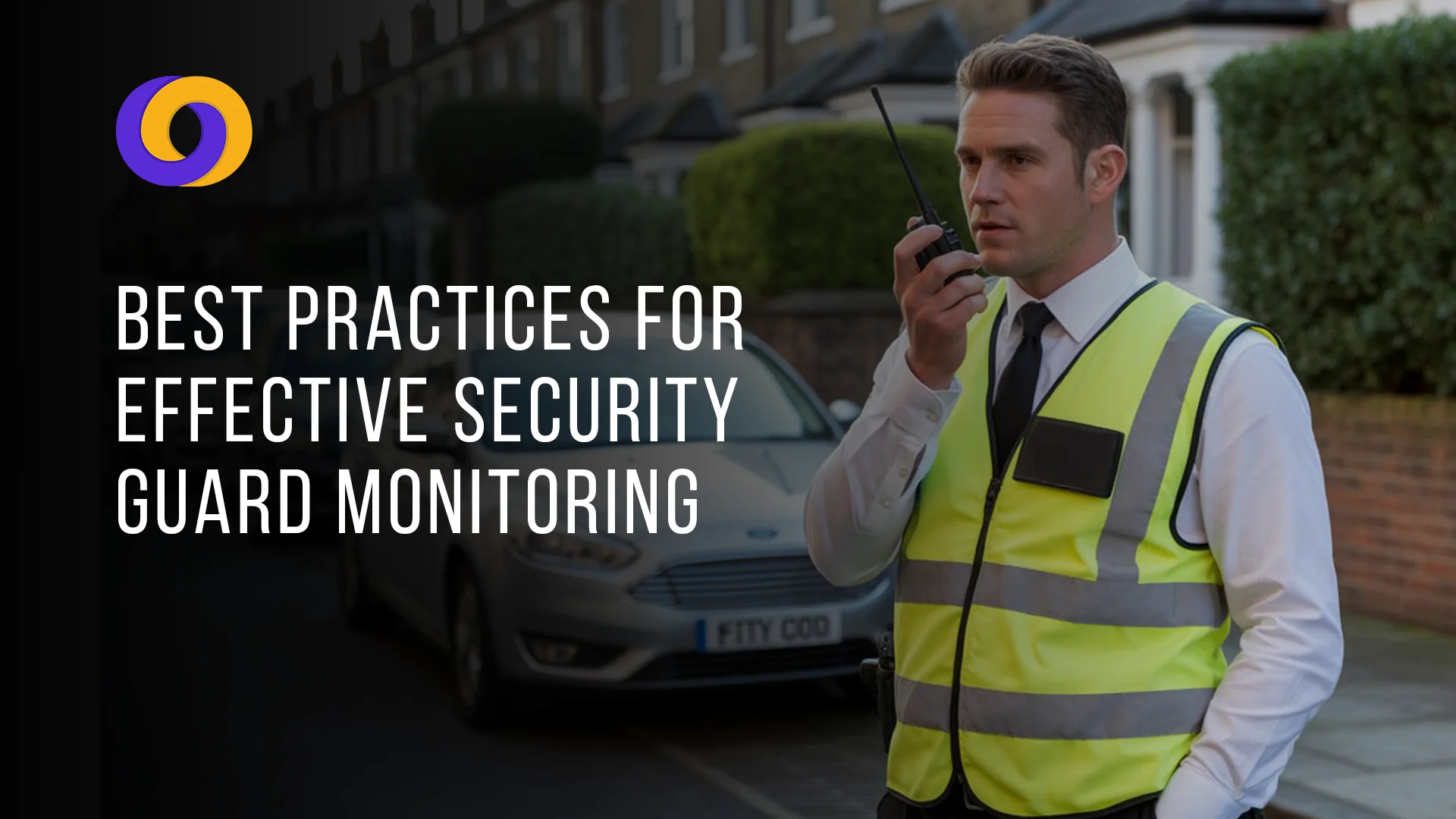A strategic physical security approach incorporates guards in the field, which comprises only half of the security efforts. This is done through monitoring and accountability of the security guard’s activity.
Even the best style of security guards, having the intent of monitoring your sites equipped with the best standard practices, can have difficulties. Such problems may include building accountability, situational awareness, and effectiveness as a cohesive security team without involving proper security guard monitoring.
No matter if you supervise a corporate building, construction site, or retail space, security guard monitoring is a must.
In the following blog, you will be guided through seven best practices for effective security guard monitoring to get from a passive security presence to a proactive, data-driven, and effective security team.
What is Security Guard Monitoring?
It is defined as the process of overseeing and managing the duties, location, and performance of security guards in real time. The use of technology can assist a security management team with GPS (Global Positioning Systems), mobile applications, and digital reporting tools. This is to ensure that guards are completing the proper patrol routes, responding to incidents in a timely manner, and following both security protocols and standard operations.
Moreover, security guard monitoring moves beyond merely supervising security officers. It uses specific video recording and technology to verify accountability with security event data, information, and/or insight into what was done that day. Hence, increasing site safety and operational efficiency.
Best Practices for Effective Guard Monitoring
Now, we’ll discuss some of the best practices that must be applied for effective and streamlined monitoring of your security guards:
1. Implement Real-Time GPS Tracking
Tracking your guards’ real-time location is revolutionary. It obsoletes static checkpoints, which guards can easily evade. Now, with real-time, live maps of guard activity, monitoring utilizes GPS technology.
Why it Works: It guarantees guards are patrolling the right places at the correct times. Supervisors can view the security site instantly and send the nearest guard, which can cut response time by significant margins. Additionally, it provides verifiable documentation of patrol guards for clients and reports.
2. Use Digital Guard Tour Reporting
It’s about time to move beyond logbooks and punch cards. Digital guard tour systems through a mobile app or handheld devices require guards to foreground NFC tags or QR codes at specific checkpoints.
Why it Works: This can prevent false reporting by providing timestamped and tamper-proof verification. Furthermore, it identifies each area that is checked according to the route schedule. As soon as a guard misses a checkpoint, managers get instant alerts so they can address the shortcomings immediately.
3. Establish a Centralised Operations Centre
A centralized operations centre serves as the hub for your security monitoring. It doesn’t need to look like a command centre out of any movie scene. It could just be a designated workstation that compiles information from GPS tracking, tour reports, and video surveillance.
Why it Works: A centralized operations centre offers a single pane of glass view into all security activity. It gives supervisors the ability to monitor multiple sites and on-duty guards simultaneously and coordinate responses. Also, it allows for redundancy in communications and information sharing, all while ensuring nothing falls through the cracks.
4. Integrated Video Surveillance
Your guards and your camera system should work together, not independently. Integrated monitoring platforms allow supervisors to bring up live camera feeds based on a guard’s GPS location or when they scan a checkpoint.
Why it Works: If a guard reports an incident, the supervisor can pull up visual verification of the scene of the incident immediately. When a camera sees motion in a remote part of the facility, the closest guard can be dispatched to confirm it. This further develops the collaboration of periodic human vision and technology to improve response times.
5. Detailed Incident Reporting
The quality of the report is crucial in the event of an accident. Within your guard patrol system, set a standardised digital form that walks guards through the reporting procedure. It should have fields for time, location, actions taken, witnesses, and photographic/video evidence.
Why it Works: Standardisation guarantees all needed data is recorded uniformly and plainly. This offers legally priceless audit trails and aids in the discovery of frequent problems. Besides, it gives information for enhancing future security systems.
6. Conduct Regular Performance Reviews
Move beyond subjective evaluations. To meaningfully review your guards’ performance, utilize the data produced by your monitoring system, i.e., patrol completion rates, response times, and incident report quality.
Why it Works: Data-driven feedback is unbiased and helpful; thus, it succeeds. Moreover, such information lets you recognize high performers and find guards who might need more training. Also, it establishes specific, measurable performance objectives matching operating targets.
7. Provide Continuous Training
Technology is only as good as its users. Just putting in a new monitoring solution is insufficient. Schedule frequent training sessions to make sure guards are knowledgeable about the basic processes and competent with the tools.
Why it works: Constant training increases confidence and guarantees that your staff members can use all system capabilities efficiently, especially under pressure. Additionally, it emphasizes the significance of their work and how technology helps them to remain productive and secure.
Final Thoughts
Effective security guard monitoring is about empowerment and responsibility, not micromanagement. Adopting these seven best techniques gives your staff the tools and organisation they need to be successful. The outcome is a more effective, responsive, and professional security system that offers obvious benefits and, above all, a safer environment for everyone.
Ready to improve your security operations? Smart Workforce provides a thorough security guard monitoring solution to smoothly incorporate these best practices.
Book a demo right now to observe the change data-driven monitoring may bring about.
Frequently Asked Questions

0 Comments